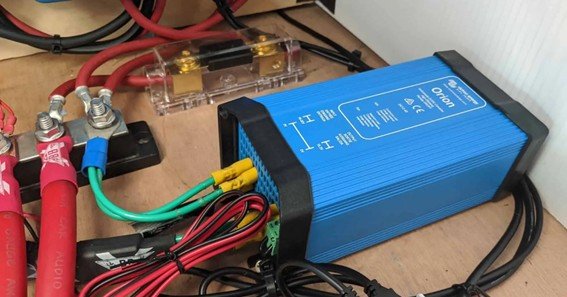An AC to DC power converter is a device that transforms alternating current (AC) from sources like wall outlets into direct current (DC) required by most electronic devices. This conversion is essential because while AC is efficient for transmitting electricity over long distances, DC is the standard for powering electronic circuits and devices.
Understanding AC to DC Power Conversion
What is an AC to DC Power Converter?
An AC to DC power converter, often referred to as a rectifier, is an electronic device that converts alternating current (AC) into direct current (DC). This process is crucial because many electronic devices, such as smartphones, laptops, and LED lights, require DC power to operate. The conversion typically involves rectification, filtering, and regulation stages to ensure a stable DC output.
Why is AC to DC Conversion Necessary?
Electricity is commonly transmitted over long distances as AC due to its efficiency and ease of voltage transformation using transformers. However, most electronic devices operate on DC power. Therefore, converting AC to DC is essential to power these devices safely and effectively. Without this conversion, devices could malfunction or be damaged due to incompatible power inputs.
Types of AC to DC Power Converters
AC to DC converters come in various types, each suited for specific applications:
-
Linear Power Supplies: These use a transformer to reduce voltage, followed by rectification and filtering. They are known for their simplicity and low noise, but are less efficient and bulkier compared to other types.
-
Switching Power Supplies (SMPS): These convert AC to DC using high-frequency switching, resulting in higher efficiency and smaller size. They are widely used in modern electronics due to their compactness and energy efficiency.
-
Unregulated Power Supplies: These provide a DC output without voltage regulation, leading to potential voltage fluctuations. They are typically used in applications where precise voltage is not critical.
Applications of AC to DC Power Converters
AC to DC converters are integral to numerous applications:
-
Consumer Electronics: Devices like smartphones, laptops, and televisions rely on AC-to-DC converters to function properly.
-
Electric Vehicles (EVs): AC-to-DC converters charge batteries from AC power sources.
-
Renewable Energy Systems: Solar panels generate DC power, which is often converted to AC for grid compatibility, but some systems use DC-DC converters for battery storage.
-
Industrial Equipment: Machinery and control systems often require DC power for operation, necessitating AC to DC conversion.
-
Telecommunications: Network equipment and data centers use AC to DC converters to ensure a reliable DC power supply.
FAQ
Q1: What is the primary function of an AC to DC power converter?
A1: Its main function is to convert alternating current (AC) from power sources into direct current (DC) suitable for electronic devices.
Q2: Why can’t electronic devices use AC power directly?
A2: Most electronic devices are designed to operate on DC power because they provide a constant voltage level, which is essential for proper functioning.
Q3: What are the advantages of switching power supplies over linear ones?
A3: Switching power supplies are more efficient, lighter, and compact compared to linear power supplies, making them ideal for modern electronic devices.
Q4: Can I use an AC to DC converter for all electronic devices?
A4: While many devices can use AC to DC converters, it’s essential to ensure that the converter’s output voltage and current match the device’s requirements to prevent damage.
Q5: How do I choose the right AC to DC converter for my needs?
A5: Consider your device’s voltage and current requirements, the converter’s efficiency and size, and whether it provides regulated output.
Understanding the role and types of AC to DC power converters is crucial for selecting the right power supply for your electronic devices, ensuring their longevity and optimal performance.










